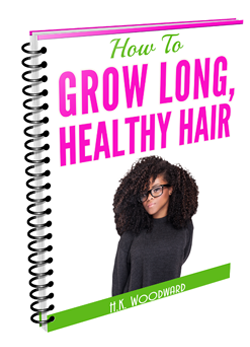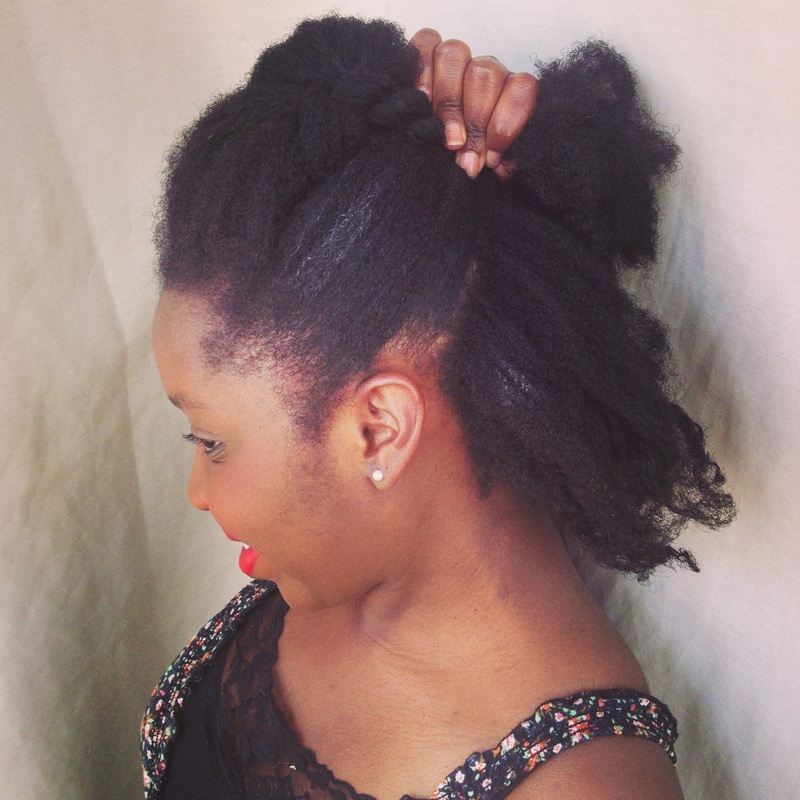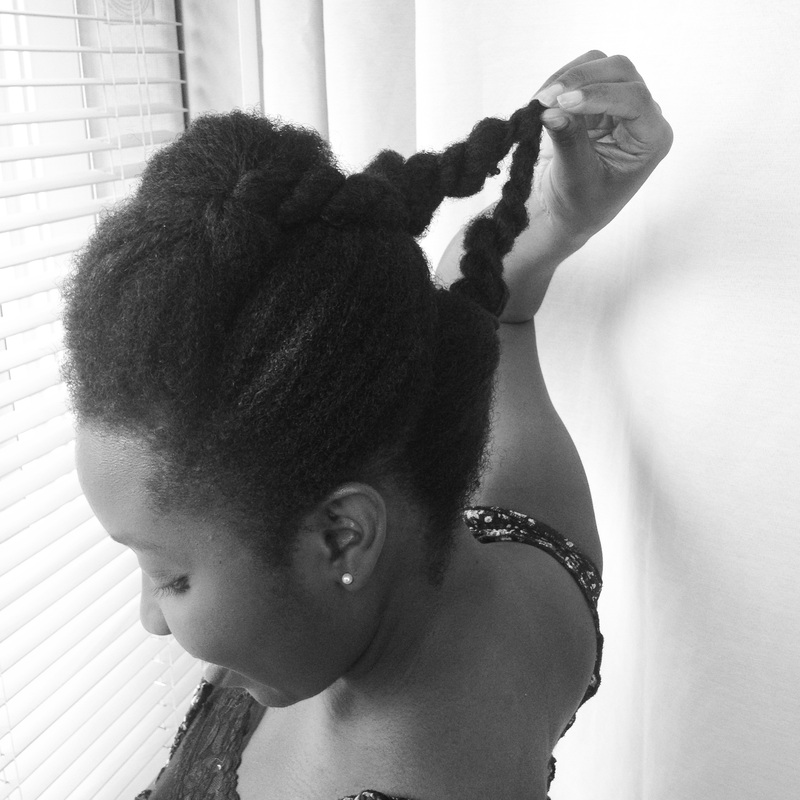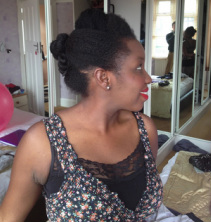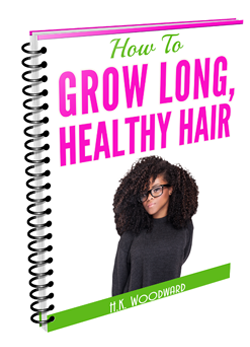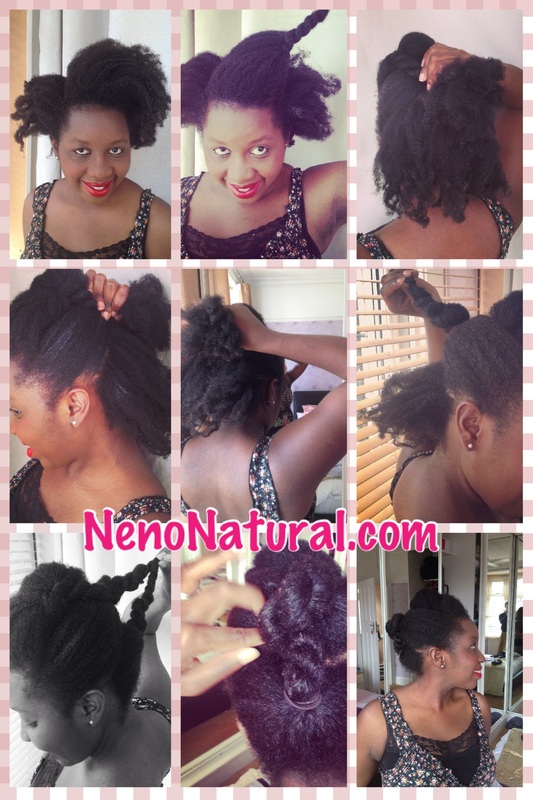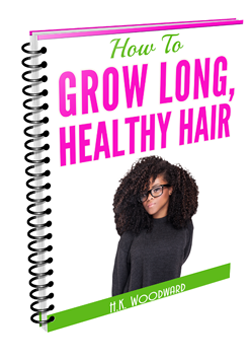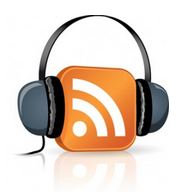
I know some people do a rinse before shampooing but really it is much more effective to do after conditioning but before applying a leave-in conditioner.
Why? The reason is simple: both lemon and ACV are acidic. This means that they cause the cuticle layer to contract and flatten. A flattened cuticle layer is closed to the entry of moisture and other products so if you plan on doing a deep condition after the ACV or lemon rinse, you're working against it. For an effective deep condition you want the cuticle to be more open and to ensure this this you shouldn't be rinsing with something acidic just beforehand. Once you've done your deep condition and rinsed off the conditioner the ACV or lemon rinse (or whatever other acidic rinse you choose) will close the cuticle layer thereby:
You can further rinse the ACV or lemon rinse with cold water to get any smell off. As the acidic rinse has already done its job of sealing the cuticle layer this follow-on cold water rinse is NOT counter productive. 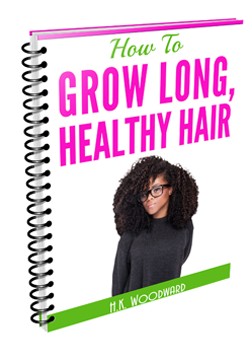
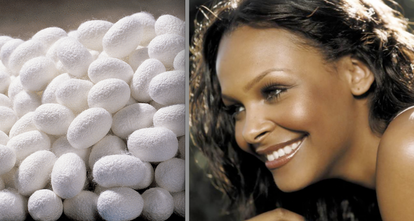
If your hair has adequate protein, then adding even more protein will cause it to become "hard, inelastic and rigid". Ultimately, this protein overuse will lead to protein-induced (or moisture deficient) hair breakage.
Why is protein included in many hair products? The protein structure of relaxed hair is compromised by the relaxing process. Extra protein is need to replace the protein that has been lost. Because many women have relaxed hair many products naturally include lots of protein. Natural hair on the other hand tends to have adequate protein so protein overuse is a real risk. Which products contain protein? Most products contain some protein the difference is simply the concentration of the protein. What form does the protein take? Protein-rich deep conditioner usually contain hydrolyzed proteins. Hydrolyzed proteins are proteins that have been broken down to a small size so that they can be taken up more easily into the hair fibre. These smaller proteins bind quickly and aggressively to hair fibres. What types of products are rich in hydrolyzed protein?
What should you look out for on an ingredients list? If you have protein sensitivity you will want to avoid products that have one or more of the following listed in the top ingredient. Generally, products list the ingredients used in the highest concentration first so if one these is less than 5th on the list there probably isn't much in there. However, a) some marketers try to trick people with alphabetical listings! AND b) you can't tell whether being listed 4th means there is 30% of that ingredient or 3%!
This should help you understand which products have a lot of protein and which products do not. Achieving the right protein/moisture balance will help you retain more length. 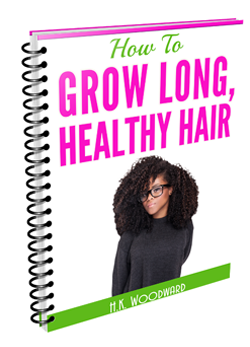
Get your FREE ebook on How To Grow Long, Healthy Natural Kinky or Curly Hair. References: The Science of Black Hair by Audrey Davis-Sivasothy (Unit 2, Chapter 6) 
To me, it means one thing: not having chemically relaxed hair, period.
Some people have broadened the whole meaning of having natural hair to include a lot of, in my humble opinion, irrelevant notions. I will iterate some of them and explain why I don't particularly agree with them: A: Don't use "non-natural" or "non-organic" stuff You might have also made a general commitment to go organic, eco-friendly and so on but that really has nothing to do with maintaining natural hair. If you've done that, great, but it doesn't mean natural-haired folk that have not taken the same oath are "not natural". A note on sulfates The only reason I avoid sulfates is because they dry hair out, not because they're synthetic, period. A note on parabens Once I realised parabens actually don't have an adverse impact on hair I stopped avoiding them like they were the plague. As a new natural I heard folks talking about how awful parabens were for hair but after doing my own research I discovered it wasn't so. They have been linked to cancer in some studies but the results were so insignificant that both the US and UK government concluded the amounts in everyday products are safe to use. That said, I don't know to what extent big businesses bought governments to turn a blind eye so I do avoid parabens just not as much as before. 
B: Don't wear make up
I posted a picture of someone with heavy makeup on the Facebook page yesterday and someone gave a little rant about how you shouldn't wear make up if you're natural. Needless to say, I deleted that comment. Don't wear wigs Why not? Wigs are a great protective style and if someone chooses to wear wigs it won't harm their natural hair in any way. They will need to ensure their edges aren't getting any thinner from abrasion but the fact that they have unrelaxed hair does not change. Of course, if one chooses to wear wigs persistently and not ever show their natural hair, I would find it a little strange and to me, it would mean they don't like or accept their natural hair but that's my issue, right? Don't straighten your hair with straighteners Girl, it is your hair. The only thing with tongs is that overuse will lead to heat damage. If you went natural because you didn't want hair damage my only question would be, why do you want to damage your hair with straighteners then? You're not accepting your African heritage I was born and bred in Africa and there is a lot more to us than our hair. It is true that some see afro hair as "not ideal" or "not appropriate" or even as "slave hair". Those people need to deal with their own negative stereotypes; it is not your problem. I will admit that initially, I went natural because of hair damage from relaxer but over time it has evolved into a statement about me not wanting society to dictate what "ideal" hair should look like. Especially if that idea is not my kinky afro! I want kinky and coily hair to become so ubiquitous that society (in the West, in Africa and beyond) accepts it as totally normal and acceptable. I also want people to accept and to be happy with the crop of hair that God gave them - as Whitney said, learning to love yourself is the greatest love of all. Even if relaxer was not damaging I would not use it because I do not want to make permanent, irreversible changes to my hair's texture. Conclusion End of the day, it is YOUR hair and you can do to it what you please, to be natural however, just means not making a permanent change to the structure - nothing more or less. What do you think? 
Dealing with other people's comments and reactions can be one of the hardest things about going natural.
It's even harder when those that are closest to you are the ones saying things that hurt your feelings. One of the saddest emails I got was from a lady whose husband simply didn't understand why she would want to go natural. He asked her why she would want to "look like a slave?"!! Yes, I was gob-smacked too. Firstly, because slavery has historically transcended race although over time black people bore the brunt of it but secondly because I couldn't believe how rude and insensitive he was being. You don't owe anyone an explanation on why you are going natural but it might help to say a little something to help them understand you a little better. I recommend the following:
This is a quick and easy style for medium length natural hair.
Step 1: Start with moderately stretched hair. Step 2: Twist the hair on top of your head into a loose twist. Step 3: Grab the hair along the sides and centre of your head and tie it up using a hair grip (don't pull too tightly to avoid damaging your edges).
Step 4: Twist the hair in the central grip.
Step 5: Tie the remaining hair at the back with another hair grip and twist that. Step 6: Pin the two loose twists into your hair. Feel free to share this summary:
I wash my hair every 7 days on average but occasionally leave it until 10 days have past. This is what I do:
WEEKLY ROUTINE 1. Finger Detangle damp hair ...because it is far easier to detangle hair when it is just a little damp rather than when it is wet or very dry. Dampening the hair and softening it with a little conditioner is called plasticizing the hair. Product used: either a leave-in conditioner or a detangler, Luv Naturals is particularly good but only available in the US and also only on their website. 2. Shampoo
3. Deep condition
4. Detangle again but this time with a comb I take the shower cap off, detangle again and then section my hair into twists after the detangling. 5. Rinse out conditioner. 6. Moisturise and plait or twist each section. My hair has to be twisted or plaited to stretch it. When it was shorter I only did 3-strand plaits because they are the most effective at stretching but now that I have gone past the shoulder twisting seems to work fine.
DAILY ROUTINE
That is basically it. You might also like: Moisturising Natural Black Hair: LOC Method vs. LCO Method 
GIVEAWAY NOW CLOSED
The 6 Best Oils are about to run out and I am about to reach 1,000 twitter followers so I thought I would celebrate by giving one set away! Entry closes 14-Jun-13, 7 p.m. GMT, 2 p.m. Eastern. To enter: SUBSCRIBE to the YouTube channel:
We will announce the winer in a 30 second YouTube video. On Saturday morning :)

This is one of those posts that's going to be short to the point and have only one point in it:
When you braid your hair, the best thing you can do for your edges is to cornrow or flat twist them. I first went natural because my hair was looking raggedy and getting thinner and the edges were the bits that needed the most TLC. Two years later, I am less psycho about not exposing my ends and I am not so dogmatic about the dos and donts of my hair but three things have remained constant:
These are the best tips I can give. What to do if the hair around your edges gets damaged? In some cases, it will never grow back but you can ensure it does not get worse by referring to these 6 Easy solutions for hair that's breaking or thinning around the edges! 
When water penetrates the hair cuticle and enters the cortex of hair the hydrogen bonds that hold the cortex together are temporarily displaced.
Hair can absorb upto 40% of its own weight in water and once wet it can stretch by 40-50% of its dry length! Hair is much more elastic and pliable when it's wet making it easier to manipulate and style. This is why it is easier to curl wet hair and then let it dry rather than curling dry hair. That said, hair is actually at its strongest when it is dry (The Science of Black Hair by Audrey Davis-Sivasothy) so when you want to detangle hair it is better to work with damp hair rather than either very dry or very wet hair. 
What type of comb should you use?
A smooth one with wide teeth like the one to the right. Click the image to get the stylish trio. |
I now blog about wealth creation - so if you have any money questions meet me there, you can do all sorts of cool things like leave me a voicemail.
By Heather Katsonga-Woodward
I was a natural hair blogger and mixtress living between London & Chicago from 2012 to 2017. I always thought I was 4C but some say 4B; images below - you decide! Heather xx Categories
All
Archives
November 2016
|



